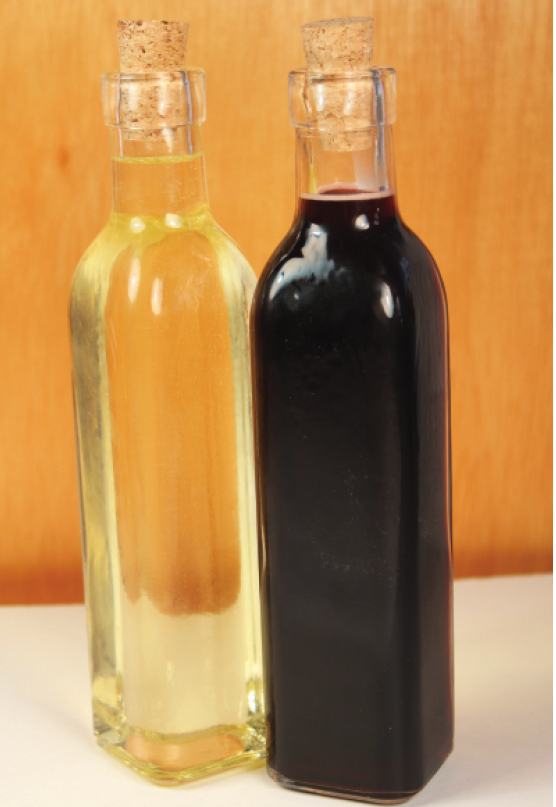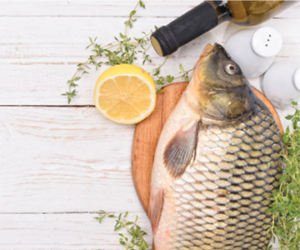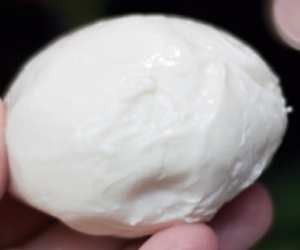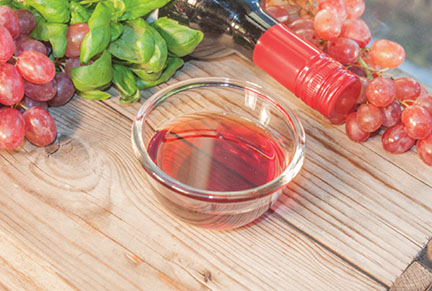 A good winemaker spends a fair amount of time and effort preventing wine from becoming oxidized and from developing volatile acidity. But the best-laid plans don’t always work out, and every winemaker — and wine drinker for that matter — has dumped out wine that was neglected and left to turn to vinegar. There are times, however, when you should just let nature take its course, and with some patience you can have some tasty homemade wine vinegar to use in your kitchen.
A good winemaker spends a fair amount of time and effort preventing wine from becoming oxidized and from developing volatile acidity. But the best-laid plans don’t always work out, and every winemaker — and wine drinker for that matter — has dumped out wine that was neglected and left to turn to vinegar. There are times, however, when you should just let nature take its course, and with some patience you can have some tasty homemade wine vinegar to use in your kitchen.
You can actually make vinegar out of any fermentation — wine, cider, beer (aka malt vinegar), and you can even ferment a bit of fruit and sugar to make a fruit vinegar if you’d like. For this article we’ll focus on wine, since as home winemakers we’ve all probably got some around, but the process for making other vinegars is the same.
The Mother
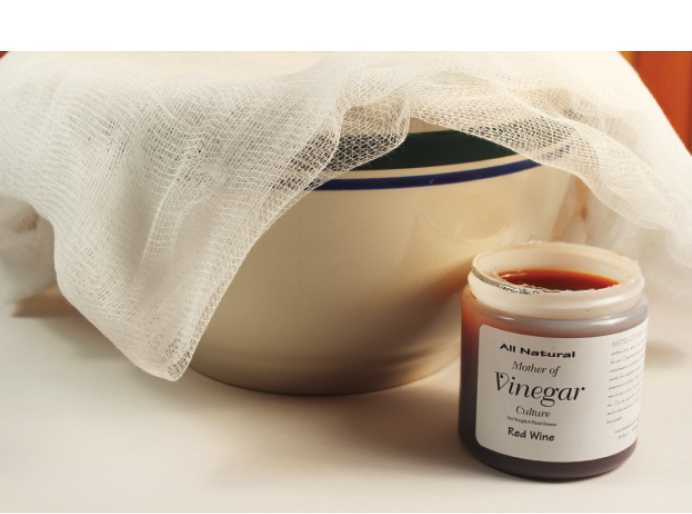
Do even a small amount of research about vinegar making and you’ll read about using a “mother of vinegar” to turn wine into vinegar. Mother of vinegar is simply a sample of live acetic acid bacteria (aka Acetobacter) starter that will get your vinegar working faster, which you can readily source from either finding a local vinegar maker, or you can buy a mother of vinegar culture from a number of home winemaking suppliers. If you’ve ever made sourdough bread, the mother is much like a sourdough starter, and similarly if you’ve made kombucha, the mother is similar to a “scoby.” You don’t actually need a mother, however, as acetic acid is abundant — hence why winemakers take pains to prevent it in their wine. Making vinegar without a mother just requires waiting longer for the process to work. Instead of using a pre-packaged mother, you can also seed your wine with some active vinegar, such as unpasteurized (“raw”) varieties you can get at most health food stores. For example some people like to seed their vinegar with Bragg’s apple cider vinegar, which is readily available in many mainstream grocery stores as well as health food stores, and contains the mother of vinegar culture.
How To
To make a ~750-mL bottle of wine vinegar, red or white, you’ll need:
• A bottle of wine of your choosing. This is a job for everyday wine that’s been open but corked for a few days or more. It should be otherwise ok but starting to pass its prime — not a prized Bordeaux blend that you’re saving for a special occasion. On the flip side, wine that has serious flaws other than just being exposed to air, or that is very old and undrinkable, won’t make great tasting vinegar.
• A cup or so of mother of vinegar or some “raw” vinegar that contains the mother (if you plan to use a starter). If you’re planning to purchase some mother of vinegar, source one that is appropriate for the wine you are using — i.e. use white wine mother for white wine, and red for red wines.
• A wide-mouth jar, bowl, or crock that can contain your volume of wine and will allow a decent amount of surface area of the wine to be exposed to air. For reference when sourcing a vessel, a 750-mL bottle of wine contains about 3 1⁄4 cups of wine.
• Cheesecloth and a rubber band (or string) to cover the jar or crock (to keep flies out).
Step by Step
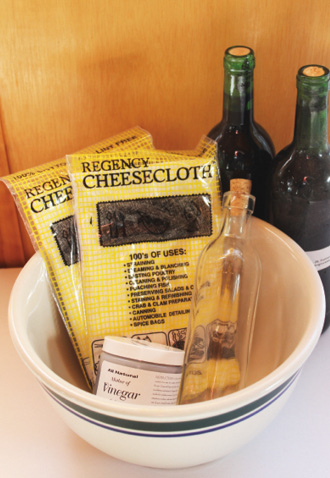
1. Pour the wine into your crock or jar.
2. If using a mother of vinegar or starter, add it to the wine and stir well.
3. Cover the jar or crock with a few layers of cheesecloth and secure it with the rubber band or string.
4. Store the jar or crock in a dark, room-temperature spot until it tastes like vinegar. If you added a starter to your wine, this could take as little as three months. If not using a mother of vinegar or starter, this could take six months or more. This is actually the hardest part of vinegar making — waiting for the Acetobacter to do the work. Unlike finished wine, however, you can take the cheesecloth off whenever you want and take a sample out to taste, and you can even stir the vinegar to incorporate more air. When it tastes vinegar-y enough for you, it’s ready. Just be sure to keep the cheesecloth on when you’re not tasting to keep fruit flies out. Also, never store your vinegar in the same place as where you make wine. Out of fear of contamination, most wineries will forbid receiving other wineries’ wines into their own unless they have tested for volatile acididty (VA) and confirmed that it is well below threshold. More practically on a hobby winemaking scale, the less fruit flies you attract to the place where you make your wine, the better.
5. If you’ve used a mother of vinegar starter, or if a film has formed on the top of the vinegar, remove anything like that floating on the surface. You can pour the vinegar through some cheesecloth to filter out anything floating around.
6. Store your vinegar in a clean bottle with an airtight lid. If properly stored, your vinegar should last anywhere from three to six months. When you start getting towards the end of your vinegar supply, pitch what’s left into a new batch of wine and start the process again.
Using Your Vinegar
Homemade wine vinegar is great for salad dressings, marinades, and for brightening up any dish that needs a boost of acidity. My personal favorite secret for taking an easy weeknight dinner to the next level is tossing some vegetables with few tablespoons of oil, a few tablespoons of homemade vinegar, and salt and pepper, and then roasting them in the oven or in a foil pouch on the grill. Any recipe that calls for store-bought wine vinegar can be made with your homemade vinegar. It’s also great simply paired with good-quality olive oil and some fresh, crusty bread. See the sidebar to the right for a few easy base vinaigrette recipes.
Cooking with Wine Vinegar
Red Wine Vinaigrette
Ingredients
1⁄2 cup red wine vinegar
1⁄2 cup high-quality (extra virgin) olive oil
1⁄4-1⁄2 tbsp. Dijon mustard
1 tsp. table sugar
salt and pepper to taste
Step by step
Combine all ingredients in a mixing bowl and whisk together. Serve immediately. For better emulsification, you can also combine the ingredients using a blender or a food processor. Try adding two cloves of finely chopped fresh garlic to this recipe, plus some dried Italian seasonings to make a tasty marinade for grilling meats or vegetables.
White Wine Vinaigrette
Ingredients
1⁄2 cup white wine vinegar
1⁄2 cup high-quality (extra virgin) olive oil
1 tbsp. Dijon mustard
1 tsp. honey or table sugar
1 tbsp. Fresh-squeezed lemon juice
salt and pepper to taste
Step by step
Combine all ingredients in a mixing bowl and whisk together. Serve immediately. For better emulsification, you can also combine the ingredients using a blender or a food processor. You can play around with adding some lemon zest, thyme, tarragon, basil, and other fresh herbs. Add herbs, plus some finely chopped fresh garlic to make a marinade for delicate vegetables or fish.